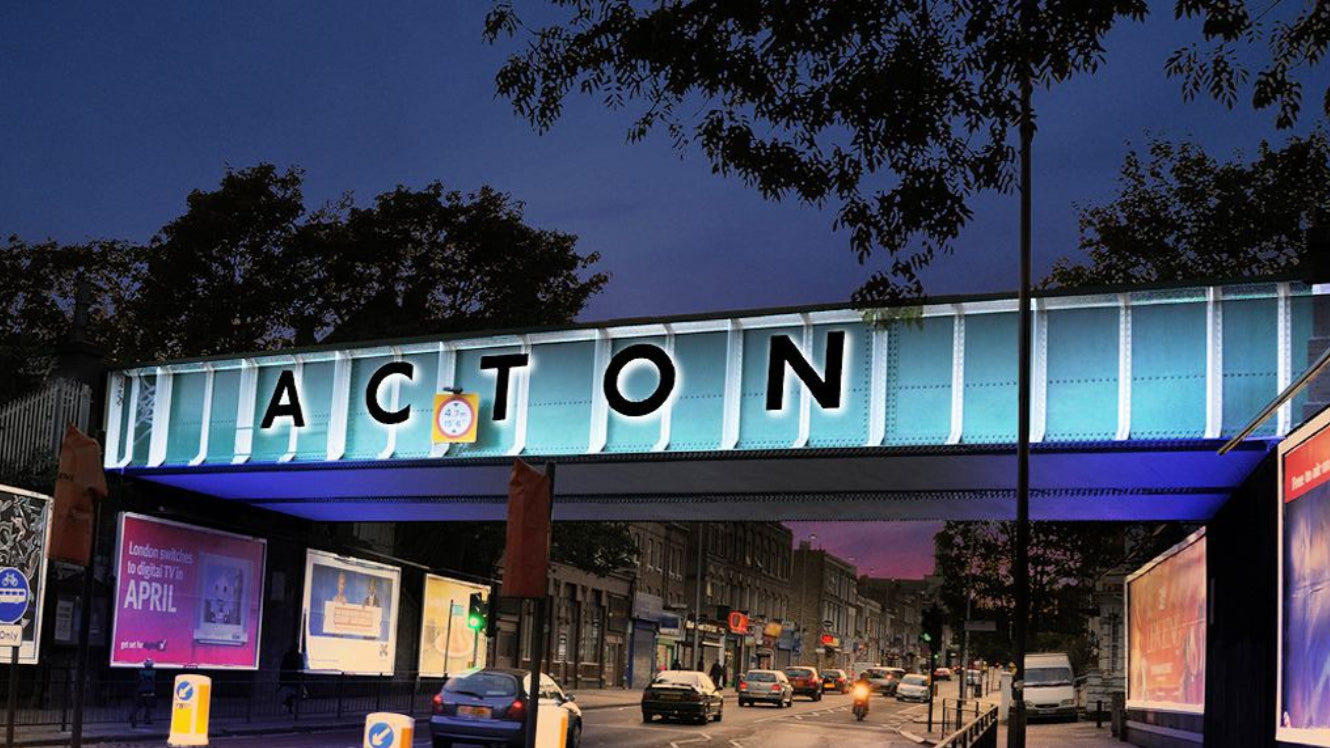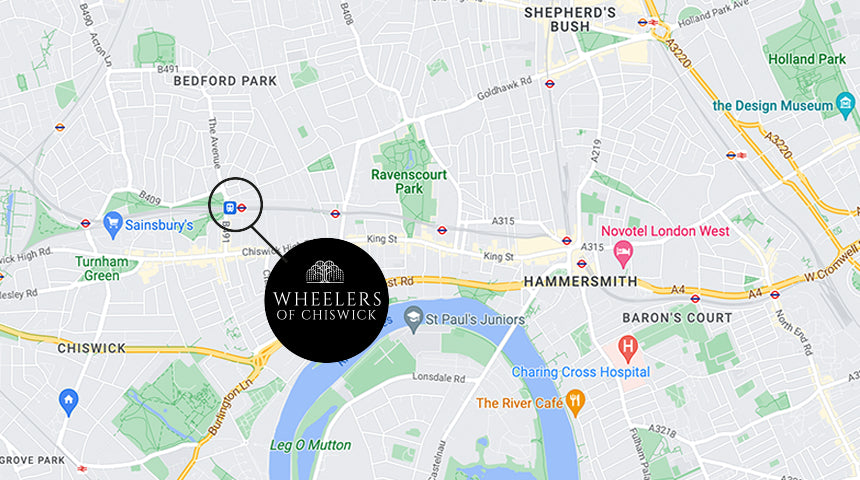Latest Flower Collection
-
The Vanity Fair
Regular price From £55.00 GBPRegular priceUnit price per -
The Bedford
Regular price From £55.00 GBPRegular priceUnit price per -
The Barley
Regular price From £55.00 GBPRegular priceUnit price per -
The Queen Anne
Regular price From £55.00 GBPRegular priceUnit price per -
The Devonshire
Regular price From £55.00 GBPRegular priceUnit price per
The bridge supports a considerable volume of daily traffic, playing a crucial role in the area's transport infrastructure. It is a key crossing point, especially for those commuting between central and south-west London. Local bus services frequently use the bridge as part of their routes, ensuring it is well-integrated into the public transport network. The surrounding neighbourhoods benefit from this connectivity, making Chiswick Bridge an asset to the local community.
Additionally, Chiswick Bridge contributes to the scenic landscape, providing stunning views of the riverbanks and adjacent green spaces. Positioned in an area noted for its parks and riverside walks, the bridge complements leisure activities in the vicinity. Cyclists and walkers often utilise the bridge to access the nearby attractions along the Thames Path. Its strategic location enhances the overall accessibility and appeal of this part of London.
Understanding the current role of Chiswick Bridge as a key part of London's transport network sets the stage for exploring its history. Knowing how the bridge was designed and built adds depth to appreciating its modern significance. In the next section, we'll delve into the historical background, highlighting how its past shapes its present-day use and importance.
A flourishing reputation: What our clients say
Tracing the historical journey of a London icon
Chiswick Bridge was completed in 1933 as part of a project to improve roads around London. It was designed by architect Herbert Baker and built by the company Cleveland Bridge & Engineering Company. The bridge's construction was part of a broader effort to modernise London's infrastructure during the early 20th century. It was officially opened with a ceremony attended by the Prince of Wales, marking its significance to the city.
The design of Chiswick Bridge includes three large arches, using reinforced concrete and granite for durability. Its architectural style reflects the needs of the time, balancing strength with aesthetic appeal. The bridge also played a role during World War II, as it was a vital crossing and had to endure wartime conditions. Over the years, Chiswick Bridge has undergone maintenance and improvements to ensure it remains a sturdy and important part of London's road network.
Having explored the historical background of Chiswick Bridge, it's important to see how this history influences its current design and upgrades. The next section will focus on recent developments and the architectural details that keep the bridge both functional and appealing. Understanding these modern updates helps us appreciate how the bridge continues to serve London's needs while honouring its past.
Modern enhancements of a historical landmark
Chiswick Bridge has undergone several important developments to maintain its functionality and appearance while respecting its original design. Below are key aspects of its recent upgrades, architecture, and overall development:
Structural Reinforcement: In recent years, Chiswick Bridge has been reinforced to ensure safety and durability. These efforts included strengthening the concrete arches and supporting structures to handle modern traffic loads.
Lighting Upgrades: The bridge's lighting system has been updated with energy-efficient LED lights. This not only enhances visibility and safety for users at night but also reduces the bridge's environmental impact.
Surface Improvements: The road and pedestrian paths on the bridge have been resurfaced to provide a smoother experience for both vehicles and pedestrians. These upgrades help reduce wear and extend the lifespan of the bridge surfaces.
Architectural Restoration: Efforts have been made to clean and restore the original granite facades, ensuring the bridge retains its historic aesthetic. This work helps preserve the architectural elegance while maintaining its structural integrity.
Cyclist and Pedestrian Access: Pathways have been improved and widened to better accommodate cyclists and pedestrians. These changes promote safer and more efficient non-motorised travel across the bridge.
These updates and improvements ensure that Chiswick Bridge remains a vital and attractive part of London's infrastructure. By combining contemporary enhancements with historical preservation, the bridge continues to meet the diverse needs of the community while celebrating its architectural heritage.
Commonly asked questions about accessibility, operations, and travel on the iconic Thames river crossing
What accessibility features are available at Chiswick Bridge?
The bridge is designed to be accessible to pedestrians and cyclists, featuring well-maintained pathways. These paths are suitable for individuals with mobility challenges, ensuring everyone can enjoy Thames crossing in west London. Regular maintenance is carried out to keep these routes clear and safe for users.
Who is responsible for operating and maintaining the bridge?
The responsibility for operating and maintaining the bridge falls under the purview of Transport for London. This organisation ensures the historic archway in the city is kept in good condition to accommodate the various forms of transport that use it. Maintenance includes structural inspections and necessary repairs to uphold safety standards.
How does the bridge connect to public transport links?
The bridge is strategically positioned to link several bus routes that run across it, providing convenient travel options for local and visiting commuters. Its role as a notable riverside connector makes it a critical part of the public transport network, facilitating easy access to other parts of London. Both buses and local cycling routes integrate around the crossing, enhancing overall connectivity.
Are there any ticketing options required to use the bridge?
There are no ticketing options required to cross the bridge as it is a public roadway open to both vehicular and pedestrian traffic. Standing as a famous bridge by the capital, its free access allows it to serve daily commuters efficiently. However, for public transport across the bridge, regular transport fares apply for buses or other linked services.
When are the peak travel times for this route?
Peak travel times typically coincide with the standard commuting hours in the city, especially in the morning and late afternoon. During these times, the renowned London overpass experiences higher traffic volumes, affecting vehicle and bus travel. Commuters are advised to plan accordingly, as long delays can occur if travelling during these periods.
A legacy of family values and community in Chiswick
In 1991, brothers Jason and Spencer Wheeler began their business journey in Chiswick, inspired by the values of hard work and community instilled by their late parents. They chose to honour their family's legacy through their dedication to quality and by adopting a weeping willow logo, a nod to their family's cherished tree. Over the years, their commitment to these values has made them an integral part of the local community.
Wheelers of Chiswick has built a reputation for crafting luxury hand-tied bouquets and providing bespoke floral arrangements. Their skilled team curates seasonal flowers and plants tailored to individual preferences, ensuring every creation is fresh and artistic. Alongside their floral services, they also offer garden design and maintenance, transforming outdoor spaces into personalised havens for their clients.
By focusing on both exceptional floral artistry and comprehensive garden services, Wheelers of Chiswick enriches the West London community. Their commitment to quality and their strong family values foster lasting relationships with clients, contributing beauty and growth to every environment they touch. This dedication not only honours their parents but also continues to build their legacy in the Chiswick area.
Having explored the history and community impact of Wheelers of Chiswick, it's useful to know the local area better. The next section will guide you on how to reach Cato's Yard, another interesting spot in Chiswick, from the iconic river crossing. Located in the postcode area W4 1LR, understanding this route will enhance your experience of navigating around Chiswick.
Navigating your journey around Chiswick with ease
Starting your journey from the river crossing, head west along the A316 until you reach the Hogarth Roundabout. From there, continue onto Chiswick High Road and follow it through the lively shops and cafes until you arrive at Turnham Green Terrace. As you stroll along this charming street, you'll soon reach your lively destination. Navigating this short journey offers a pleasant opportunity to explore the heart of Chiswick.
If you need a bit more help finding your way, just check out the map below for the exact route. Plus, you can find more details on Wheelers' opening hours and customer reviews through their Google Business Profile.








